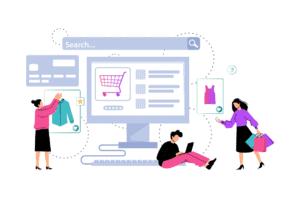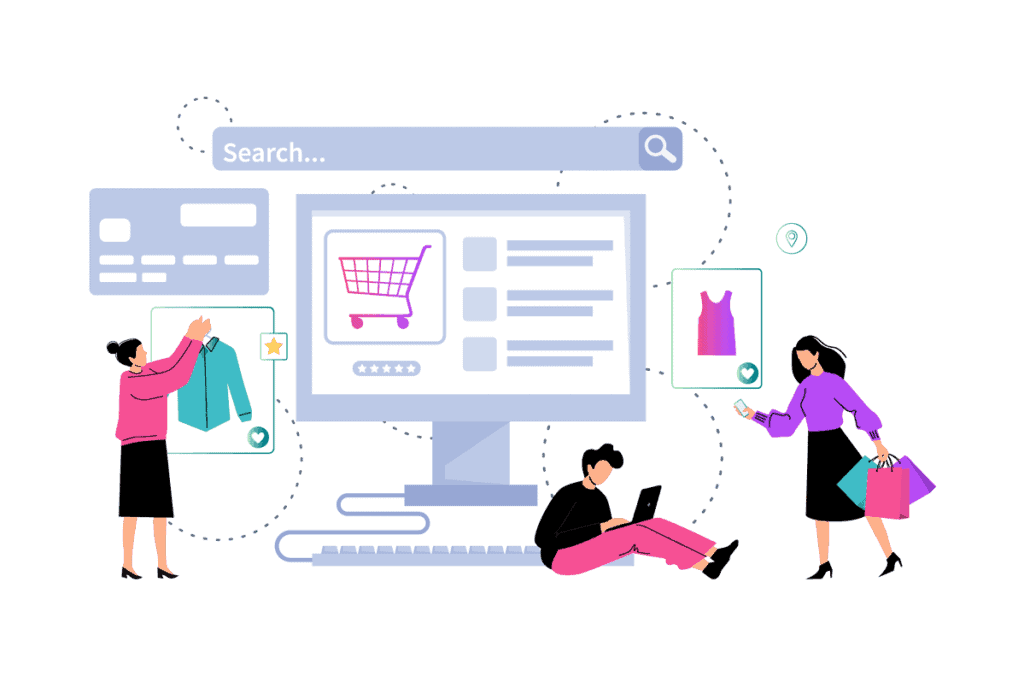In the current business climate, personalization – the customizing of interactions based on individual needs and preferences – is more than just a trend; it’s a necessity.
It’s about fostering unique experiences that resonate with customers on a personal level, thus elevating engagement, loyalty, and, ultimately, profits.
This article delves into the power of personalization in crafting unique customer experiences in today’s market.
We’ll explore its implementation and benefits and provide success stories demonstrating its potential to transform customer engagement and set businesses apart in a highly competitive landscape.
Understanding Personalization in Customer Experience
Personalization in customer experience involves tailoring interactions, products, and services to meet the specific needs and preferences of individual customers.
This customization isn’t just based on a customer’s purchasing history; it leverages a broad spectrum of data, including browsing behavior, demographics, and feedback, among others.
It is implemented across multiple touchpoints – from email communications and website content to customer service and in-store experiences, such as simplifying product search.
Whether you’re scaling your eCommerce business, setting up a restaurant on WooCommerce, or even starting a side hustle, personalization is integral to the contemporary business landscape for two primary reasons: relevance and connection.
Firstly, relevance is key in an era marked by information overload. Customers are constantly bombarded with generic ads and promotions, resulting in many of these messages being ignored or dismissed. Personalized interactions, however, resonate because they align with customers’ individual interests and needs.
Secondly, personalization fosters a deeper connection between the brand and the customer.
It demonstrates that a business recognizes its customers as unique individuals, not just data points. This can greatly enhance customer loyalty and satisfaction.
In fact, research shows that customers are willing to pay more for products and services when they receive a personalized experience.
In essence, personalization isn’t just a value-add; it’s increasingly becoming an expectation.
In fact, 94% of businesses claim personalization is key to their success, meaning businesses that fail to recognize this run the risk of falling behind in the customer experience race.
The Impact of Personalization on Customer Experience


Personalization significantly enhances customer satisfaction and engagement.
By tailoring interactions to individual preferences and behaviors, businesses can create experiences that are meaningful and relevant to each customer.
Whether you’re personalizing a customer’s shipping information or setting up product recommendations that hit just the right note, these experiences make customers feel valued and understood, thus increasing their overall satisfaction and engagement.
An effectively personalized customer experience can lead to tangible business results such as boosted sales and improved customer retention.
Personalized product recommendations, for instance, can help customers discover items they might not have found otherwise, thereby encouraging additional purchases.
Meanwhile, personalized customer service can resolve issues more effectively, enhancing the overall customer experience and reducing the likelihood of customers switching to a competitor.
One of the most powerful impacts of personalization is its ability to increase brand loyalty.
A consistently personalized experience demonstrates to customers that a brand values them as individuals, not just as sales figures.
This can foster a deeper emotional connection between the customer and the brand, which is a key driver of loyalty.
Additionally, loyal customers are more likely to become brand advocates, spreading positive word-of-mouth and further contributing to a brand’s success.
How to Implement Personalization in Your Business
There are several ways you can create personalized experiences in your business, including analyzing customer data, creating personalized marketing strategies, personalizing customer service, and developing personalized products and services.
Let’s take a look at each of these in closer detail.
Collecting and analyzing customer data
The foundation of successful personalization is robust customer data.
Businesses need to collect a wide range of data, from basic demographic information to more complex behavioral data such as purchase histories, browsing behaviors, and customer feedback.
This data can be collected through various channels, like website cookies, customer surveys, and CRM systems.
After collection, it’s important to analyze this data to identify patterns, preferences, and trends that can guide personalization strategies.
Creating personalized marketing strategies
Once the customer data is analyzed, it can be used to create personalized marketing strategies.
This might involve segmenting customers into different groups based on shared characteristics, and then tailoring marketing messages to each group.
Techniques can range from personalized email marketing, where messages are customized based on individual customer preferences, to dynamic content on websites that changes based on user behavior.
Implementing personalized customer service
Customer service is another crucial area where personalization can be implemented.
This could involve using customer data to provide more relevant and personalized support.
For instance, customer service representatives can have access to a customer’s history with the company, allowing them to provide more informed and personalized assistance.
Additionally, businesses can use AI-powered chatbots that can offer personalized responses based on the customer’s specific needs and inquiries.
Developing personalized products and services
Personalization also extends to the products and services businesses offer.
Based on insights derived from customer data, businesses can tailor their offerings to meet specific customer needs.
This might involve customizable product features, or even creating entirely new products based on what the data suggests customers want.
Fostering a Personalized Community
An additional powerful strategy in implementing personalization is building a personalized community. Communities built around your brand can provide an avenue for increased customer engagement, brand loyalty, and valuable feedback loops.
Creating such communities requires genuine understanding and investment in your customers.
Online platforms can be used to create these spaces, be they social media groups, forums, or on your business’s own website.
The key is to make these spaces feel exclusive, valued, and welcoming to your customers.
Here, they should be able to engage in meaningful discussions, share their experiences, and feel a sense of belonging.
Leveraging technology for personalization
As businesses navigate the intricate terrain of personalization, technology emerges as a powerful ally.
It provides the tools needed to gather customer data, extract insights, and tailor experiences.
This section delves into the pivotal role of Artificial Intelligence and Machine Learning, the use of personalization software and tools, and the indispensable aspect of data security and privacy in personalization.
Role of Artificial Intelligence and Machine Learning
Artificial Intelligence (AI) and Machine Learning (ML) play a critical role in personalization by allowing businesses to analyze vast amounts of customer data and extract actionable insights.
ML algorithms can identify patterns and trends in customer behavior, thereby predicting future behaviors and preferences.
AI, on the other hand, can use these insights to automate and optimize personalized experiences.
This ranges from AI chatbots providing personalized customer support to AI-driven recommendation systems offering tailor-made product suggestions.
Use of personalization software and tools
A plethora of personalization software and tools are available to aid businesses in their personalization efforts.
These include Customer Relationship Management (CRM) systems, email marketing platforms, and website personalization tools.
These solutions can help segment customers, automate personalized communications, and provide personalized web experiences, making it easier for businesses to execute their personalization strategies.
Importance of data security and privacy in personalization
While personalization offers immense benefits, it also presents a significant challenge: ensuring data security and privacy.
As businesses collect and analyze more customer data, they must prioritize data protection.
This involves using secure systems and processes, maintaining transparency with customers about how their data is used, and complying with data privacy regulations.
Upholding data security and privacy is not only essential for legal compliance but also for maintaining customer trust, which is crucial for successful personalization.
Challenges in implementing personalization and how to overcome them
While personalization promises significant benefits, it’s not without its challenges.
But don’t let these challenges put you off – one survey reported that 60% of online shoppers say that brands that fail to deliver a personalized experience would lose their loyalty.
Below, we explore some common hurdles businesses face in implementing personalization and discuss strategies to overcome them.
Common challenges in implementing personalization
- Data collection and analysis: Gathering enough relevant data and interpreting it correctly can be difficult, especially for businesses new to personalization. This is a complex process that requires considerable resources and expertise.
- Technology integration: Integrating the necessary technology and tools can be another significant challenge. It often involves significant IT infrastructure changes and the need to ensure compatibility among different systems.
- Balancing personalization and privacy: Striking a balance between personalization and privacy is a delicate task. Overstepping boundaries can result in the loss of customer trust while underutilizing data can lead to missed personalization opportunities.
Effective strategies for overcoming these challenges
- Building a data-centric culture: Overcoming data-related challenges requires building a culture that values data. This means investing in data analytics skills, encouraging data-driven decision-making, and utilizing technologies like AI and machine learning to automate data analysis.
- Partnering with tech experts: To ease technology integration, businesses can partner with tech experts or service providers. They can assist in identifying the right tools, ensuring smooth integration, and providing necessary training.
- Establishing clear privacy policies: To balance personalization and privacy, businesses should establish clear privacy policies. This includes being transparent with customers about data collection practices, providing them control over their data, and adhering to all relevant data protection regulations.
Future trends in personalization
As we look toward the future, advancements in personalization technologies continue to shape the way businesses interact with their customers.
Let’s explore these trends and their predicted impact on business and customer experience.
Advancements in personalization technologies
- AI and machine learning evolution: AI and machine learning technologies are becoming increasingly sophisticated. Future advancements are expected to include the ability to analyze even more complex data sets, leading to deeper and more nuanced personalization.
- Omnichannel personalization: With the proliferation of digital channels, businesses are working towards providing a seamless, personalized experience across all touchpoints. This concept, known as omnichannel personalization, is expected to grow further in the coming years.
- Hyper-personalization: Hyper-personalization is an advanced form of personalization that uses real-time data to deliver highly relevant experiences to each individual customer. With the advent of better data analytics and AI capabilities, this level of personalization is likely to become more commonplace.
Predicted impact on business and customer experience
The evolution of personalization technologies is set to have a profound impact on business and customer experience.
- Enhanced customer understanding: As personalization technologies become more advanced, businesses will gain an even deeper understanding of their customers. This will enable them to meet customer needs more precisely and proactively.
- Streamlined customer journeys: With omnichannel personalization, customer journeys are expected to become more streamlined and consistent. This will help build stronger customer relationships and increase loyalty.
- Increased customer expectations: As hyper-personalization becomes more prevalent, customers will come to expect this level of customization. Businesses that can meet these expectations will stand out, while those that can’t may struggle to compete.
Overall, the future of personalization looks promising, with advancements in technology paving the way for deeper, more meaningful customer interactions.
Businesses that stay ahead of these trends and embrace the opportunities they bring are likely to gain a significant competitive edge.
Conclusion: Harnessing the Power of Personalization
Personalization is more than a business trend; it’s a catalyst for unique customer experiences and a driver of brand success.
This article has explored its significant role, shedding light on its impact, the strategies for its implementation, and the exciting future trends.
In our digital era, personalization is essential. By creating experiences tailored to customers’ needs and preferences, businesses can elevate customer satisfaction, enhance loyalty, and boost sales.
However, it also poses challenges, including striking a balance between personalization and privacy, data management, and technology integration.
Nonetheless, these challenges can be navigated with strategic planning and a customer-centric approach. Despite the hurdles, the benefits of personalization are worth pursuing.
Its power to deepen customer relationships, combined with its potential to transform businesses, makes it an invaluable tool for today’s businesses, marking the path to sustainable growth and success.




